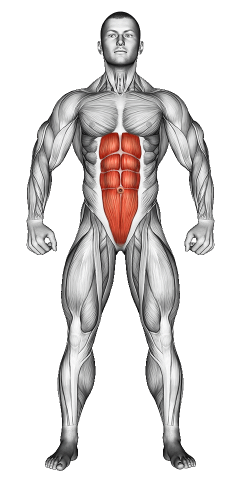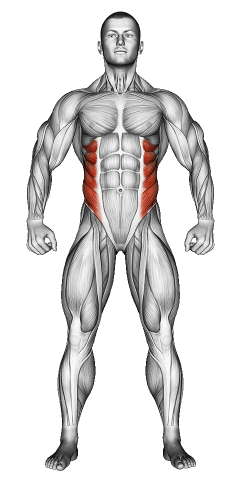Hollow Body Hold: Video Tutorial & Exercise Guide

Written By: Claude Michael
Updated: Oct 13, 2024
| Workout | Hollow Body Hold |
| Primary Muscle Group | Abs |
| Secondary Muscle Group | Obliques |
| Equipment Required | Bodyweight |
| Force Type | Static |
| Mechanics | N/A |
| Exercise Type | Stability |
| Difficulty | Intermediate |
Hollow Body Hold: Video Tutorial & Exercise Guide
- 1.Hollow Body Hold: Muscle Groups
- -1.1Primary Muscle Group
- -1.2Secondary Muscle Group
- 2.Hollow Body Hold: Step-by-Step Guide
- 3.Hollow Body Hold: Overview
- 4.Hollow Body Hold: Benefits
- 5.Hollow Body Hold: Pro Tips & Advanced Techniques
- 6.Hollow Body Hold: Progression Plan
- 7.Hollow Body Hold: Frequently Asked Questions (FAQs)
Secondary Muscles Group
Hollow Body Hold: Step-by-Step Guide
- Step 1: Lie flat on your back with your arms extended overhead and your legs straight out in front of you.
- Step 2: Press your lower back firmly into the floor, engaging your core. Keep this tension throughout the exercise.
- Step 3: Lift your legs a few inches off the ground, keeping them straight. Simultaneously, raise your shoulders and upper back off the floor, bringing your arms in line with your ears.
- Step 4: Hold this position, maintaining a hollow shape by keeping your core tight and avoiding any arching in your lower back.
- Step 5: Hold the position for the desired amount of time, breathing steadily. Lower your arms, shoulders, and legs back to the floor with control to finish the exercise.
Hollow Body Hold: Overview
The hollow body hold is a fundamental core exercise used to build strength and stability in the abdominal muscles. It’s widely used in gymnastics, as it teaches athletes how to brace their core effectively and maintain tension throughout their body.
This exercise challenges your entire core, including the rectus abdominis, obliques, and transverse abdominis. By keeping your lower back pressed into the ground, you activate the deep core muscles, making it a highly effective movement for improving overall core strength and stability.
Hollow Body Hold: Benefits
The hollow body hold helps develop core strength, stability, and endurance. By focusing on keeping your lower back pressed into the ground, this exercise improves your ability to maintain proper posture and body alignment during other movements like squats and deadlifts.
It also enhances body control, which is critical for athletes and anyone looking to improve their overall fitness. The hollow body hold trains you to keep tension in your core, which can translate to better performance in a variety of exercises and sports.
Hollow Body Hold: Pro Tips & Advanced Techniques
To ensure you're getting the most out of the hollow body hold, focus on keeping your lower back pressed into the floor throughout the entire exercise. If you find it difficult to hold the position, you can modify it by bending your knees or lowering your arms until you build more core strength. For an advanced variation, try rocking your body slightly back and forth while maintaining the hollow position, increasing the intensity and core engagement.
Hollow Body Hold: Progression Plan
Beginner
Intermediate
Advanced
Hollow Body Hold: Frequently Asked Questions (FAQs)
What muscles do hollow body holds target?
+This exercise primarily targets the core, including the rectus abdominis, obliques, and transverse abdominis. It also engages the hip flexors and lower back to a lesser extent.
How do I modify the hollow body hold for beginners?
+Bend your knees and bring them closer to your chest to reduce the difficulty, or keep your arms by your sides instead of overhead.
How often should I perform the hollow body hold?
+Incorporate this exercise into your core routine 2-3 times per week for best results. It pairs well with other core stability exercises.
What common mistakes should I avoid?
+Avoid arching your lower back or letting your legs drop too low. Focus on maintaining core tension and pressing your lower back into the floor.
Share
Don’t Wish for It, Work for It – Join the FlexXP Newsletter Today!
Thank you for signing up for the FlexXP Newsletter!
This site is protected and the Google Privacy Policy and Terms of Service apply.

